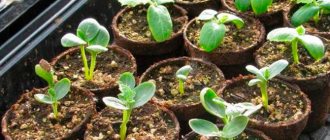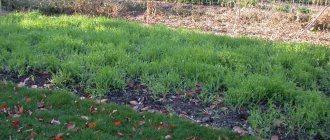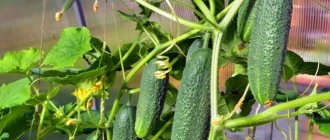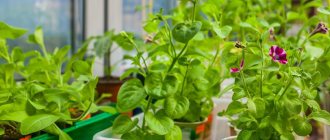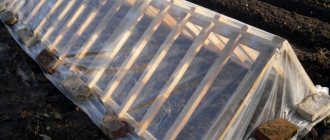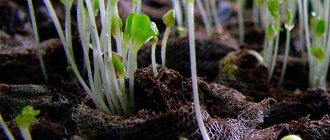Many summer residents and gardeners dream of decorating their plot or garden with some beautiful and bright plant, but without spending a lot of effort on growing and caring for it. We know the solution to this problem!
Phlox is an annual flower that will delight you with its bright colors and colors. The seeds of this flower can be sown directly into the ground, but if you are not interested, you can grow plants through seedlings. To help you plant and grow a flower correctly, we have prepared some tips and suggestions.
The numerous colors and types of phlox make it necessary to give preference to one or more, but not all at once. The most common is Drummond's phlox.
When to sow annual phlox seeds for seedlings: optimal timing in 2022
Before you start planting phlox, you need to determine the best time to sow seeds for seedlings. The best times in 2022 are the last days of February, all of March and the first days of April.
Planting dates are so unclear, because each region of Russia has different climatic conditions, so you need to rely on the weather in your area.
In addition, you can focus on the Lunar calendar, the most optimal dates for planting phlox in 2022:
- in February -1, 2, 3, 4, 5, 6, 7, 8, 10, 11, 12, 13, 14, 15, 16, 17, 18, 19, 20, 25, 26, 27, 28;
- in March - 2, 3, 4, 5, 6, 7, 8, 10, 11, 12, 13, 14, 29, 30, 31;
- in April - 1, 2, 5, 6, 7, 9, 18, 19, 20, 24, 25.
Not all gardeners have the opportunity to sow seeds for seedlings on these days; you can do this on other days, but do not forget that there are days on which you absolutely do not need to plant these plants:
- in February - 9, 21, 22, 23;
- in March - 9, 19, 20, 21, 24;
- in April - 8, 15, 16, 17, 23.
Annual phlox seeds can be sown immediately in open ground in April-May if you live in the south or have had a very warm spring.
Dividing the bush
How long after the division will take place depends on the condition of the bush, but no less than every 3-4 years. This can be done at any time. The plant is dug in a circle, taken out of the hole with a small lump of soil, the shoots are shortened to 15-17 cm. The bush is divided into separate parts, each must contain at least 5 buds.
The pit for transplantation must be prepared in advance. If you are going to replant the crop in the spring, then preparation is carried out in the fall, if in the summer or autumn - 14 days before the process. The distance between the holes should be about 0.5 m so that the bushes do not interfere with each other as they grow. It depends on the variety of phlox chosen.
Compost is poured into the pit and mineral fertilizers are added. When planting in autumn, it is not recommended to use nitrogen fertilizers. If the soil is highly acidic, then lime is used, about 200-250 g. All added components are thoroughly mixed to prevent burns to the root system.
Before planting, the hole must be thoroughly watered. The placed bushes are covered with soil so that the buds are covered with 4-6 cm of soil and compacted. Then compost is added and compacted again. Mulch is poured on top.
Popular types
Paniculate
This is one of the most popular and frequently used types of phlox; this variety is a perennial plant that delights gardeners with its fragrance. Their peculiarity is a very powerful and long root system, thanks to which they can grow more than 150 cm in length.
The paniculate appearance of phlox attracts with its incredibly beautiful inflorescences, which glow with bright colors in your flower beds. In addition, their flowers are fragrant with a pleasant honey aroma.
paniculate phlox
Subulate
The main distinguishing feature of this species is its miniature size; the neatly folded branches of this plant give the impression that the flowers are in a small basket.
Subulate phloxes are bush-like plants with sharp and hard leaves. Very small but incredibly cute buds grow on the branches. Phloxes of this species delight gardeners twice a year, from May to June and from August to September.
Subulate Phlox
Drummond
Plants of this type have numerous advantages, for example, they do not fade in the sun and have amazing frost resistance and drought resistance. They amaze not only with their resistance to stress, but also with their beauty.
Drummonda is a small bush; it will fit perfectly into any landscape design, since you can choose absolutely any color.
This plant will free you from any worries, since it is completely easy to care for and can independently spread throughout your site or garden.
Phlox annual drummonda
Powdery mildew
The most common disease of phlox is powdery mildew. If you do not rid the bush of damage in a timely manner, this can lead to its withering and death. Powdery mildew can completely cover the plant with a dense white coating, even the inflorescences. In most cases, phloxes are affected by this disease in late July - early August. Gradually, the foliage begins to curl, dry out and fall off.
How to fight powdery mildew?
- Carrying out preventive measures. Treating flowers with copper sulfate. From the beginning of June, bushes are periodically sprayed with fungicides, but not less than 2-3 times per season.
- Fighting the disease. When the first signs of damage appear, you need to spray the bush every day for a week with a solution of soda ash and soap or a solution of copper sulfate and soap.
- Re-processing a diseased plant in the fall.
Phlox are beautiful flowers that, with proper care, can delight with their lush and bright color throughout the spring and autumn period.
Popular varieties
star Rain
Star Rain is a popular Drummonda variety, its distinctive feature is the unusual shape of its petals, usually they have a sharp or slightly pointed shape. Thanks to this handicap, the flowers resemble stars; with the help of this variety you can create a real starry sky in a flowerbed.
Phlox drummond starry
Tetra Riesen
This group of varieties belongs to fairly tall plants; they have fairly large flowers; they can reach 6 cm in diameter.
The variety of colors allows you to choose a plant that will exactly suit your landscape design.
Phlox Tetra Riesen
Feuerbahl
If you are a lover of red shades, then this variety is for you. Phlox of this variety is a plant up to 30 cm in length, which has large flowers of only a red-pink hue. Shades may vary in color intensity.
Phlox paniculata Feuerbahl
Twinkling star
It is not for nothing that this variety was given such a name; its flowers resemble twinkling stars due to the pointed shape of the petals and unusual coloring. Often their color is a gradient, from bright colors to soft pink or white.
Phlox drumonda twinkling star
Phlox varieties. Phlox perennial and annual
Phloxes are flowering herbaceous plants belonging to the Sinyukhidae family. Distribution area: northern regions of America, Russia.
Phloxes from the same species may vary as they are influenced by climatic conditions. For example, alpine ones grow from 5 to 25 cm, bryophytes. Their trunks are branching and covered with evergreen foliage. In a favorable climate, the stem of phlox becomes straight, the height is from 30 cm to 1.8 m. The leaves are located opposite, the shape is elongated-ovate or lanceolate-oval. The diameter of the buds is 25-40 mm, tubular-funnel-shaped.
Most species are perennials, but Drummond phlox and its cultivars are annuals.
Phlox subulate, paniculate, splayed and annual: description
There are several dozen varieties of phlox, but they are all divided into 4 separate groups:
| Description | Peculiarities | Usage | |
| Subulate | Perennial, stem reaches 20 cm. Foliage is narrow, needle-shaped, length up to 20 mm. Color – green (almost until the first frost). Buds - blue, purple, crimson. The flowering period is from late spring to July. | Low-growing and groundcover species | They decorate alpine slides and create compositions in rock gardens. |
| Spread | The trunk is from 20 to 40 cm high. The flowers are small, the edges are wide, narrowed towards the center. Colors range from white to purple. The foliage is elongated (up to 50 mm in length), tough. Flowering period is May-June. | The most unpretentious among all varieties of phlox. It has a rich, pleasant aroma. | In the landscape field. |
| Paniculate | It grows from 40 cm to 1.5 m. The foliage is lanceolate, elongated, reaching 6-15 cm in length. The trunk is erect. Inflorescences are spherical. Flowering - from mid-summer to September. | The most popular. It has a wide variety of varieties with different colors. | For decoration of home gardens. |
| Annuals (Drummonda) | The stem is up to 30 cm. The petals have slightly pointed tips. Flowering duration is from June until the first frost. | Grown exclusively from seeds. There is a delicate scent. | In rockeries and alpine slides, flower beds are decorated. |
Step-by-step instructions for planting annual phlox seedlings
In order for incredibly beautiful flowers to appear in your garden or vegetable garden, you must know how to properly plant phlox seedlings. You can learn all the secrets and tricks from us; below you will read step-by-step instructions.
Selection of capacity
There are no strict restrictions in choosing a container for seedlings; any container is suitable for these purposes; you can take a cut bottle or milk carton.
There are also no special restrictions on whether to produce seedlings in a common container or individually. Phlox will grow well in both cases.
When preparing and choosing a place for planting Phlox, you should pay attention to the groundwater level: it should be low, since the plants do not welcome
Seed selection and preparation
The further growth and development of the plant depends on the quality of the seed, so you need to buy seeds from reliable producers. You need to ensure that the seeds are of high quality.
Phlox seeds do not necessarily need to be treated before planting, but if this is important to you, you can soak them in a soluble growth preparation. The dosage should be indicated on the drug packaging.
Growth stimulating drugs help plants sprout faster and young shoots to be stronger.
Soil preparation
To grow phlox, you need to prepare loose soil into which air and water can easily penetrate.
If you don’t want to bother and prepare the soil yourself, then you can buy a universal soil that is intended for flower crops. But if you want to make the soil yourself, then you need to mix the following ingredients:
- peat
- humus
- sand
- perlite
Direct sowing
Before sowing, you need to make sure that everything you need is ready: container, soil and seeds.
- Place drainage at the bottom of the container
Drainage will help avoid waterlogging of the soil; you can do without it, but the roots will definitely not rot. You can use broken brick or expanded clay as drainage.
There is no need to put too much drainage material, a layer of 1 cm will be enough.
- Fill the container with prepared soil
Place the prepared soil in a container, making sure there are no empty spaces. Also, do not fill the container to the very edges, leave 2-3 cm.
- Moisten the soil in the container
Watering is best done from a sprayer, but this is not the main thing, the main thing is that the water is clean and infused. Never water the soil and sprouts with tap water.
You can only use clean water, it should be a little warm and settled, and in no case from the tap.
- Planting seeds
Here it is necessary to evenly distribute all the seeds over the surface, it is best if the distance between them is a couple of centimeters.
You can distribute it with your fingers, since phlox seeds are quite large in size. If you are not comfortable with your fingers, you can use tweezers.
Phlox seeds
- Soil compaction
After planting the seeds, you need to compact the soil a little; this can also be done with your fingers.
- Watering
Water the seeds with clean, infused water in a thin stream.
- Greenhouse effect
To prevent moisture from evaporating too quickly, you need to create a greenhouse effect, this can be done using a regular plastic bag.
The main thing is that the material with which you cover the container is transparent; not only a bag, but also a piece of glass is perfect
- Transferring a container
After all the procedures, you need to move the container closer to sunlight, for example, to a windowsill. The main thing is that the temperature is within 25 degrees.
Features of sowing
Sowing of phloxes is carried out at the end of February or early spring in low containers. This could be a wooden box, a plastic container, or a transparent food tray. The container must be clean; to be safe, rinse it with boiling water. A drainage layer of expanded clay is laid at the bottom, then soil is poured.
Phlox seeds are scattered evenly over the surface and then lightly pressed with your hand to ensure firm contact with the soil. There is not much planting material in one package, so it is better to take 2-3 packs of seeds, taking into account the fact that not all of them will sprout. The crops are lightly sprinkled with dry soil. After this, the soil is moistened with a spray bottle and covered with film.
The container with the crops is placed in a lighted place. The shelter cannot be removed until the seeds germinate. The film is removed daily for 15-20 minutes to ventilate the plantings. As necessary, the soil is sprayed with water at room temperature; it must not be allowed to dry out, otherwise the seeds will die.
Caring for phlox seedlings after germination
- The first thing you need to do is place the container in a bright and warm place, this was discussed earlier. You also need to turn the container in different directions towards the light during the day and ventilate the greenhouse once a day;
- You will be able to see the shoots in a week; after they appear, you need to remove the cover and lower the temperature by a couple of degrees;
- At each stage of plant growth, the soil should be kept sufficiently moist and watered with a sprayer before germination. When the seedlings appear, you need to water them using tweezers and try not to get water on the plants themselves.
It is also recommended to highlight the plants, since the normal daylight hours are 12-14 hours
Conditions for seedlings
The container with the crops should be placed in the most illuminated place - ideally it should be a southern window sill. On cloudy days, you can turn on additional lighting. For this purpose, a fluorescent lamp or LED lamp is used. It’s even better if the house has a phytolamp specifically designed for plants.
In order for the seedlings to develop well, the room must be warm - 23-25 °C. It is better not to place the box with seedlings close to the glass, it is cooler there. As soon as the shoots appear, the shelter is removed. It will be necessary to slightly reduce the temperature 2 weeks before planting phlox in the ground. They do it smoothly. First, lower the temperature to 20 °C, and later to 16 °C. Thus, the seedlings will undergo the necessary hardening and quickly adapt to new conditions after moving to the flowerbed.
Phlox flowers: 8 tips for planting and care
How to properly pluck phlox seedlings
Phloxes tolerate diving very well, so feel free to take on this task. From the general container you need to move them into single cups, which should be quite large.
The same soil can be used, but it must be sprayed with Fitosporin-M solution.
The time of replanting can be determined by the appearance of the plant; it can be replanted when two or three leaves appear on it
Step-by-step instructions for picking seedlings:
- During transplantation, you can damage the roots; to avoid this, you should water the plants several hours before the procedure;
- Drainage material must be placed at the bottom again;
- Next, add the prepared soil, but do not fill the container to the very brim;
- Make a hole in the center of the cup;
- Then pick up the plant along with the root and a piece of soil; this can be done with a fork or some kind of stick;
- Place the plant in the hole, cover with soil and compact;
- At the end of the picking, water the roots, but try not to get it on the plants themselves.
When picking, weak and rotten shoots should be discarded.
Diseases and pests (treatment)
All plants are susceptible to disease and are affected by various pests. Annual phlox is no exception.
Diseases
Fungal diseases: phomosis - leaves dry out, stems become brittle. For prevention, bushes are sprayed with colloidal sulfur in warm weather; Septoria - dark spots appear on the leaves, gradually growing. Treat by spraying the plantings and soil with Bordeaux mixture, repeat the treatment after 15 days; powdery mildew - a coating similar to flour appears on the bushes. Such a plant is dug up and burned; it is impossible to cure it.
Variegation. Petals and stems are covered with an ugly pattern. Cannot be treated. Sick specimens are dug up and burned to prevent infection of other plantings.
Verticillium wilt. The disease destroys the root system. The disease is typical for specimens growing in acidic soils.
Pests
Nematode. A thread-like, very small worm that sucks sap from stems and leaves. Diseased seedlings have thinner stems and smaller inflorescences. Such a bush is burned. The soil is treated with nematicides three times with an interval of twenty days.
Naked slugs. In the dark, they eat the lower part of the stem, inflorescences, and leaves. Dusting the soil with ash, tobacco dust, and fluff lime serves as a preventive measure and fights slugs. Systematic loosening of the soil and weeding will also help in the fight against them.
Butterfly caterpillars. Caterpillars are removed by collecting them by hand, and the plantings are treated with special preparations against leaf-eating pests.
Important! Many diseases are acquired along with planting material. Seedlings purchased at the market may be infected with the virus.
Sowing in open ground in autumn
When sowing seeds in autumn, you need to remember a few important rules that will help you grow beautiful and healthy plants.
- It is necessary to sow seeds at a great distance from each other, as they can grow to very large sizes;
- Planting depth – 25-30 cm;
- You should also add a little peat.
In winter, do not forget to cover the crops with film
How to collect seeds
Preparations for harvesting begin when the plants are still blooming profusely. Select and mark the ones you like best by tying a string to the stem. Hybrid varieties marked F1 are not accepted. They do not retain varietal characteristics.
At the time of ripening, the seed pods begin to turn yellow; then, in dry and windless weather, in the afternoon, they are cut off along with the stem. For ripening, they are laid out in paper bags, on which the variety and color of the plant are indicated. They are stored in the same bags until the next season, placed in a dry, dark place.
Conclusion
By following all the instructions for growing annual phlox from seeds, and knowing when to plant them, gardeners will receive a wonderful decoration for their plot, as well as admiring glances and remarks from everyone who sees this miracle.
Sowing time
Perennial seedlings are best planted in the spring, but when the air warms up to a fairly comfortable temperature. If the spring temperature in your region is not warm enough, you can cover them with film.
Perennial plants can be planted either using seedlings or directly in open ground.
The main thing is to choose the right place for planting; it should be protected from the wind and be sufficiently lit and warm. You also need to ensure that there is not too much groundwater at the planting site.
Reproduction methods
Propagation by spring cuttings
I begin to harvest cuttings in May, when the height of the bush reaches 15 cm. The cutting process can be carried out at any time until mid-summer, but not later. The shoots are cut off, leaving only two developed buds, then they are placed in liquid for an hour, but no more.
Just before planting, the lower foliage is removed, the cutting is shortened to half, and a cut is made under the bud. The length of the finished cutting varies from 5 to 11 cm. It is better to plant it in the shade or a greenhouse so that it can take root and not wither. You can also cover with film or wet paper. The cuttings need to be deepened by 1.5 cm, the soil around will become compacted. The rooting process lasts about two weeks.
Propagation by autumn cuttings
The best option for propagating phlox is autumn cuttings. They begin to prepare them at the end of August. Processing and preparation of cuttings is the same as described earlier. Rooting is recommended in a greenhouse or greenhouse. In spring, such bushes already begin to bloom profusely. When planting a plant in a permanent place of growth, it is deeply buried so that almost all the buds are underground. This helps the flower to survive the winter.
Caring for young animals in open ground
In open ground, young animals should be watered only in dry weather; the soil should not be allowed to flood, otherwise fungal diseases may develop.
Fertilizer and top dressing will also not be superfluous, but you need to choose them based on their purpose. If you want to increase the green mass of the plant, then you need to use nitrogen fertilizers. And, if you want to increase the number of buds and flowers, then use phosphorus and potassium fertilizers.
In order to avoid drying out of the plant, it is necessary to remove dry leaves and flowers. Otherwise, they can take away moisture and nutrients.
Autumn care, transplantation
Before winter, the bushes need to be hilled up and organic fertilizers applied - manure, humus. They can be covered before frost to prevent freezing. In the fall, fungal diseases are prevented; fungicides are suitable for this. If the seeds on the bushes do not have time to ripen, then such crops are dug up and moved to a warm room until they are fully ripened.
In the fall, transplantation and rejuvenation, that is, division, of the bush is carried out. Transplantation is recommended for those plants that have grown in one place for a long time or have become crowded in this bed. As for division, it needs to be done every 5-6 years.
Drummond phlox
Phlox Drummond, which can be seen in the photo, is an annual plant with branched bushes with a height, based on the species, of approximately 40 centimeters. During the summer period, as can be seen in the photo, numerous rather fragile shoots appear, which are collected in umbrella-shaped flowers. In good weather conditions, Drummond Phlox blooms quite profusely. In the middle of the summer period, small ball-shaped boxes ripen on which the seeds ripen. They are located in the central part of the flowers and are practically invisible, so they cannot spoil the overall appearance of the flowering bushes in the photo. It is possible to collect these boxes, collect seeds from them and then plant them. Seed germination can be good for about 4 years.
Homeland of phlox
The birthplace of this plant is the south of America, Texas. It was first noticed by a popular traveler from Great Britain, Henry Drummond, who sent seeds of this variety to England around 1834. The new one was very popular among gardeners and after about 12 years it turned out to be a common plant among English gardens. However, Drummond phlox was not introduced into culture in its homeland.
Soil: should be slightly acidic.
Planting: you can plant the plant in mid-March in semi-warm greenhouses, tall species must be planted earlier than short ones, the period for planting seeds in open soil is from May to winter.
Features: cold-resistant plant that can tolerate frosts down to about -5 degrees.
Difficulties with growing: it is better to plant in sunny areas, it does not like it when the root system overheats, if you water little or, on the contrary, a lot, the plant will not bloom anymore, it grows poorly in damp weather, you will not be able to enjoy abundant flowering if the plant does not have fertilizing.
Growth: large-flowered varieties reach a height of approximately 48 centimeters, the flowers are large, low-growing compact varieties reach a height of approximately 18 centimeters.
Color palette: they come in white, yellow or red.
Flowering period: from June to October.
Decorative features: the flowers reach a diameter of 1.8 centimeters. They are fragrant and monochromatic.
Shape and color of leaves: leaves can be either broadly lanceolate or triangular, and also covered with short, hard hairs.
Color of flowers
Flowers can have different colors, for example, white or pink. Quite often you can find species and forms that have variegated flowers. At the same time, you can see stains, streaks, spots or rings of different shades on the flowers. The shape of the flowers and petals is also varied. The flowers of a plant such as phlox frummonda can be either single or double, which look like small delicate roses. Non-double varieties have wide, rounded leaves that overlap one another.
In the central zone of our country, Drummond phlox can be grown using seeds, and the seeds can be planted in the second half of March. Shoots from seeds may appear after a week. After the first true leaf appears, the seeds sprout. Even during rare germination, picking is necessary, since older plant varieties cannot tolerate transplantation into the ground well. Planting care: moderate watering is required when the soil dries out; fertilizing with complex mineral or organic fertilizers is required every week. Planting from seeds is placed in the most illuminated place, otherwise the phlox will stretch. In the second half of May, seedlings from seeds need to be planted in the soil. In this period of time they will already have buds. Drummond phlox is easy to grow.
There are several garden forms of Drummond phlox:
- stellata is a plant whose flowers are star-shaped;
- dwarf is a compact low bush that reaches approximately 18 centimeters in height;
- tetraploid form with large flowers.
Phlox varieties
The stems of this plant have strong branching and stickiness. The whole plant is quite lush. The flowers have a pleasant smell and a rich monochromatic or two-color color, in some cases with an eye in the center. The color palette of inflorescences is quite diverse, it includes phloxes red, white, blue, purple and so on. Phlox Drummond blooms from June to October. Phlox Drummond is used mainly as a border plant, in which you can perfectly see the gorgeous star-shaped flowers, it is also used in a mixborder, it is usually planted in a flower garden and a flower bed.



